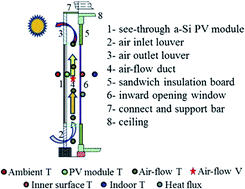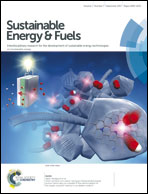Energy performance and heat transfer characteristics of photovoltaic double skin facades (PV-DSFs): a review
Abstract
Building-integrated photovoltaics (BIPV) have become a promising technology due to the urgent demand for sustainable energy supplies. Effective thermal regulation of BIPV is of great importance because the undesirable heat produced by photovoltaic (PV) modules will not only decrease the energy conversion efficiency, but also increase the building cooling load. The photovoltaic double skin façade (PV-DSF), regarded as one of the most feasible approaches to mitigate these problems, has been widely adopted and constructed globally. This paper presents a comprehensive literature review on PV-DSFs in terms of both energy performance and heat transfer characteristics. The energy performance of PV-DSFs involves a combination of energy supply from PV systems and energy demand for indoor heating, cooling and lighting. Investigations on the air flow and heat transfer characteristics in PV-DSFs are essential for understanding the heat transfer mechanisms and optimizing the system configurations. Based on the literature review, an outlook for future research is provided. This review article is expected to serve as a useful reference for future research and development of the PV-DSF technology.



 Please wait while we load your content...
Please wait while we load your content...